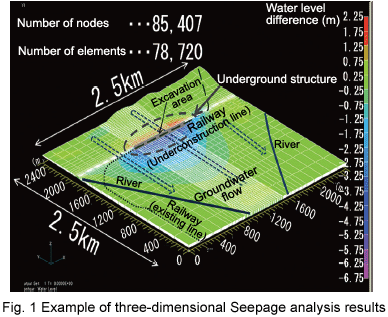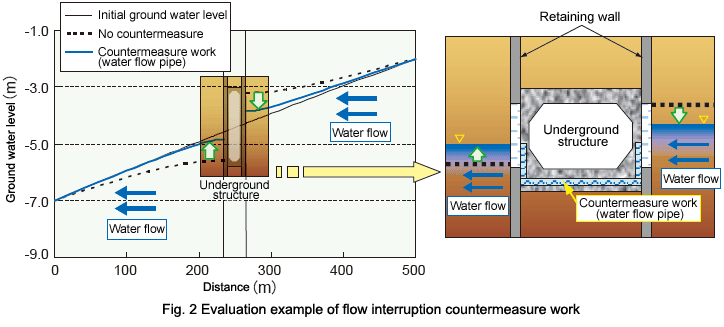In recent years, increasing underground construction of railway elements has been executed in response to worsening road traffic situations and vibration/noise issues in urban areas. In station areas in particular, large-scale earth-retaining works are built in underground areas. As a consequence, underground water environments are greatly changed by continuous interception of ground water flow, resulting in influences such as dried-up wells and deformation of the surrounding ground. Against this background, the RTRI evaluated the groundwater flow interruption generated as a result of building underground structures, and developed a three-dimensional seepage analysis program using the finite element method (FEM) to design countermeasure work (Fig. 1).
By considering features of groundwater-related issues such as evaluation of complex strata and wide ranges of influence, the program provides PC-based analysis of fluctuations in groundwater levels and the water content status of underground soils in regions covering areas of several kilometers. Time-sequential behavior can also be evaluated for each part of the construction process, e.g., not only after completion but also during excavation. Since the coefficient of permeability of ground is an important input parameter in such seepage analysis, the RTRI proposed a technique to perform correction according to differences in permeability test methods and enhance accuracy, thereby making the analysis more closely resemble actual phenomena.
Moreover, the RTRI evaluated the effects of countermeasures by incorporating a model of countermeasure work for ground water flow interruption including water flow pipes into the program, enabling the proposal of appropriate countermeasures such as construction methods, quantities and arrangements (Fig. 2).
|



